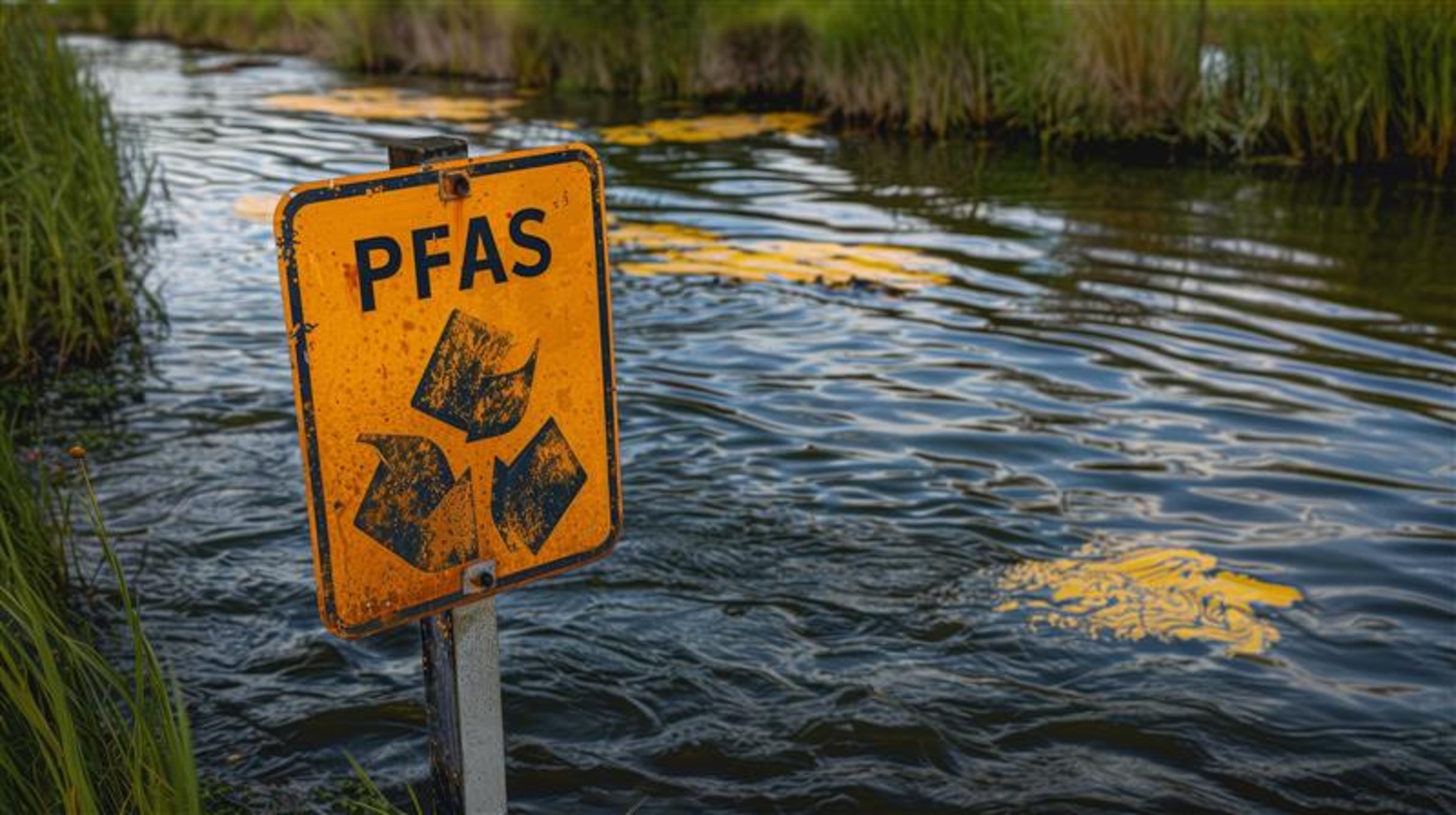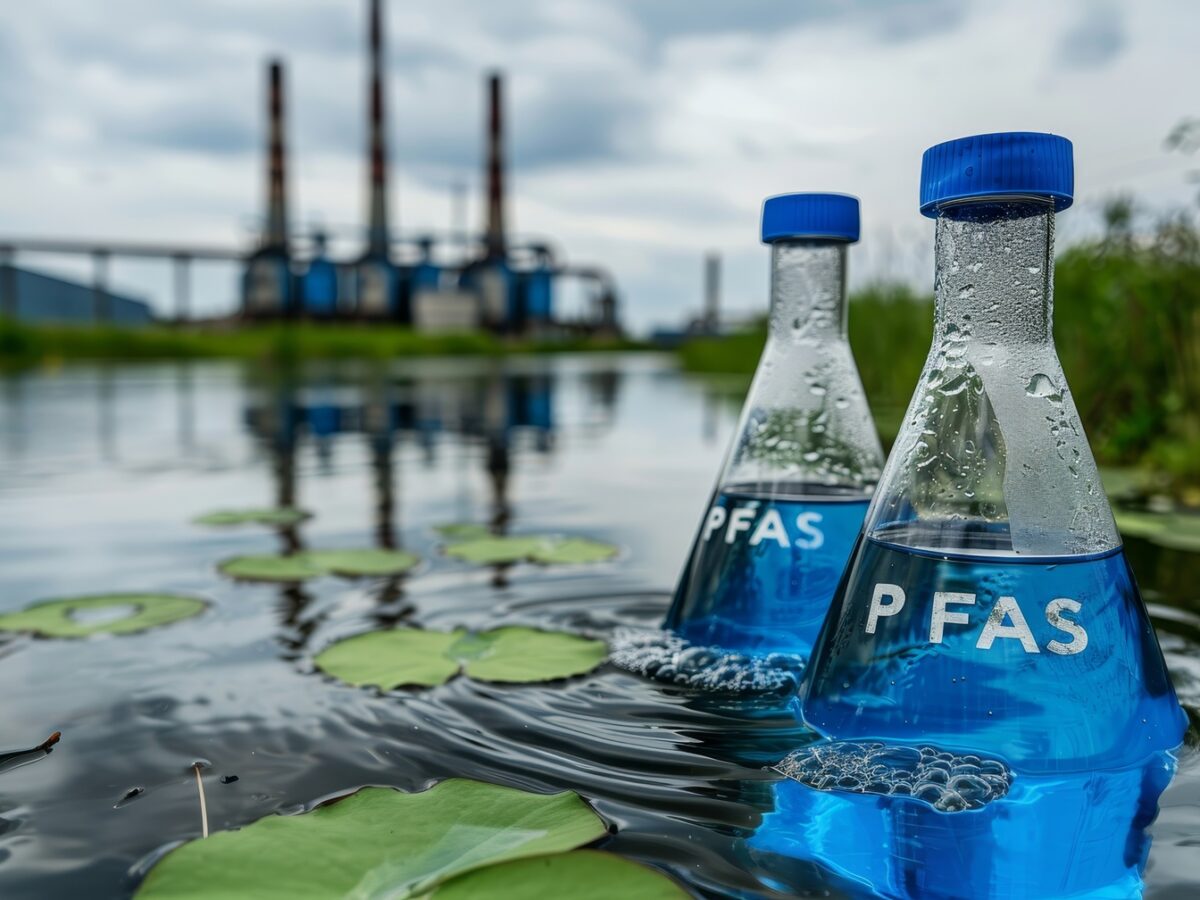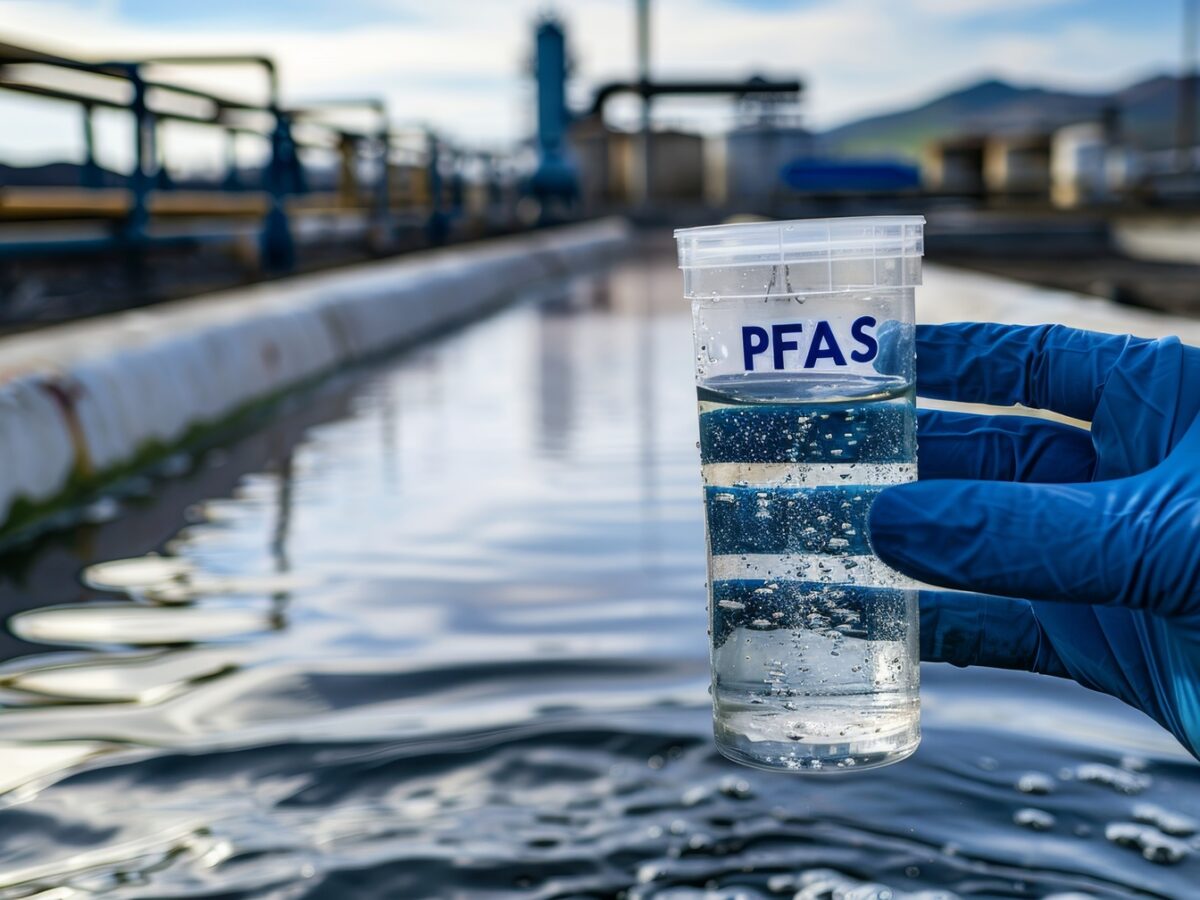In part one of this blog series, we discussed some of the basics of per- and polyfluoroalkyl substances (PFAS), including nomenclature, chemistry, regulations and sampling, and in part two, we’ll explore conventional full-scale technologies and emerging technologies for PFAS treatment.
CONVENTIONAL WATER TREATMENT TECHNOLOGIES FOR PFAS REMOVAL
Conventional water and wastewater treatment technologies have been widely utilized for PFAS removal, with varying degrees of success. To understand what treatment methods are effective, we’ll first explore ineffective technologies, then dive into those that are partially effective before arriving at a recommended approach.
INEFFECTIVE CONVENTIONAL TREATMENT TECHNOLOGIES
Full-scale water and wastewater treatment plants (WTPs and WWTPs) currently practice PFAS treatment using sorption or separation and performance data exists. However, few full-scale systems for destroying PFAS at relevant concentrations exist, and current technologies generally transfer PFAS to another medium or a concentrated waste stream, which then requires further treatment and/or disposal.
Systems that transfer PFAS from one matrix to another are interim solutions; PFAS contamination can only be effectively and sustainably addressed using destructive technologies. Due to the complexity of PFAS mixtures in raw waters, a fully effective treatment system will utilize a combination of treatment technologies designed as a treatment train.
PARTIALLY EFFECTIVE CONVENTIONAL TREATMENT TECHNOLOGIES
Granular Activated Carbon
Granular Activated Carbon (GAC) is an established treatment technology for removing unwanted substances like natural organic matter (NOM), compounds that cause unpleasant tastes and odors, and organic micropollutants. It’s also effective at absorbing PFAS, making it one of the best current practices for treating these harmful chemicals. The New Jersey Drinking Water Quality Institute Treatment Subcommittee identified GAC as one of the most effective treatment options for removal of PFNA, PFOS and PFOA. A real-world example of its success comes from the Mid-Ohio Valley, where the levels of PFAS in residents’ blood dropped 28% within a year of installing GAC filters.
GAC removes PFAS contaminants through sorption, which happens in four steps:
- Contaminants diffuse through the water and come into contact with the GAC.
- Contaminants transfer onto the surface of the GAC.
- Contaminants move deeper into the pores of the GAC for better absorption.
- The contaminants bond to the carbon through molecular interactions.
Different lengths of PFAS are removed by GAC at different rates. Studies show that long-chain PFAS are removed more effectively than short-chain PFAS. This means that while GAC can completely remove some PFAS, others—especially shorter-chain ones—may still get through the filter. Langmuir adsorption coefficients (a value that indicates how well a substance sorbs to a surface) decrease by 0.50 to 0.60 log units each time a -CF2- group is removed from the PFAS molecule. As we discussed in part one, the -CF2- group is a structural unit made up of one carbon and two fluorine atoms, which form part of the chemical backbone of PFAS. Since longer PFAS chains contain more -CF₂- groups, they sorb more strongly to GAC, making them easier to remove from water. In contrast, shorter-chain PFAS, which have fewer -CF₂- groups, do not sorb as well and are more likely to remain in treated water.
Data from real water treatment plants confirm these trends. In some systems, short-chain PFAS removal ranged from 33% to 91%, showing that they can easily pass through and remain in treated water. Other research found that 48% to 100% of short-chain PFAS slipped through GAC filters, especially when longer-chain PFAS were present.
Some research also suggests that certain PFAS shapes are better at sorbing to GAC than others. Studies show that linear PFAS stick to GAC better than branched PFAS, which means branched PFAS are harder to remove from water. GAC works best for long-chain, linear PFAS, but struggles to remove short-chain or branched PFAS. This can lead to breakthrough, where certain PFAS persist in treated water. Because of these limitations, GAC may not be the best solution if short-chain PFAS need to be removed effectively.
The effectiveness of GAC also depends on the quality of the raw water being treated. For example, the water’s pH level and the presence of other pollutants can affect how well PFAS are removed. The GAC surface must be positively charged to attract the negatively charged PFAS. Additionally, some substances in the water may have a higher affinity for GAC and compete with PFAS for space on the carbon, making the process less efficient. Additionally, the type of carbon used in GAC filters matters—bituminous coal-based GAC tends to perform better than other sources.
A major limitation of GAC is that it does not actually destroy PFAS—it only moves them to a concentrated waste form, requiring further treatment or disposal. Another challenge is that GAC filters need to be replaced or regenerated regularly, which can be costly. For example, water treatment plants in the Mid-Ohio Valley found that filters used to remove PFOA had to be replaced every 3 to 6 months, costing hundreds of thousands of dollars per year. Since short-chain PFAS can break through even faster, filter changes are sometimes required every few weeks, making it an unsustainable long-term solution.
While GAC remains a common method for PFAS removal, it should be seen as an interim solution rather than a permanent one.
Ion Exchange (IX)
Ion exchange (IX) resins are similar to GAC: they are adsorptive materials used full-scale for removing contaminants. This treatment method traps PFAS by using special resins with charged sites that attract contaminants.
Several factors affect how well IX removes PFAS from water. The chemical attraction between PFAS and IX resins plays a key role, as most PFAS in water carry a negative charge and can be captured by positively charged anion exchange resins. Additionally, PFAS molecules have hydrophobic tails, which help them stick to the resin. The type of resin also impacts performance—acrylic resins absorb PFAS more effectively than styrenic resins because they interact better with water, while macroporous resins outperform gel resins due to their larger openings, allowing more PFAS to bond.
In theory, IX resins can be regenerated and reused by using a solution containing a small amount of salt and a high concentration of alcohol to remove trapped PFAS. However, in practice removing long-chain PFAS is difficult and requires a lot of time and large amounts of chemicals to regenerate the resin. As a result, most IX systems are single use, which can be costly.
Real-world results from water treatment plants using IX have been inconsistent. One plant successfully removed long-chain PFAS and sulfonates (PFSA) with an iron-impregnated strong-base, porous IX resin, achieving appreciable removal of carboxylates (PFCA) (54% – 76%) and high removal of PFSA (83% – 93%), but struggled to remove short-chain PFAS. In another plant, PFSA were removed better than PFCA, and long-chain PFAS were removed better than short-chain PFAA. Additionally, at another WTP surveyed, IX showed little to no removal of PFAS, however this could be because the IX system was originally designed for other contaminants, such as natural organic matter or metals, and wasn’t optimized for PFAS removal.
While real-world results are mixed, IX can be more effective than granular activated carbon (GAC), especially for short-chain PFAS. However, like GAC, the raw water’s chemistry—including pH, natural organic matter, and other competing substances—can affect IX performance. Because IX and GAC remove different PFAS types, using them together in a treatment system (GAC first, then IX) is a promising solution.
Reverse Osmosis (RO)
Osmosis is a natural process where water moves through a semipermeable membrane from a less concentrated solution to a more concentrated one. Reverse osmosis (RO) works in the opposite direction by applying pressure to force water through a special membrane, leaving contaminants behind. Unlike osmosis, which happens on its own, RO requires energy to operate.
RO produces two streams of water: The permeate, which is the clean water that passes through the membrane, leaving contaminants behind, and the rejectate, which is the concentrated wastewater that contains the removed pollutants, including PFAS.
Most water treatment plants using RO recover 80% of the water as clean permeate and discard 20% as rejectate. RO is one of the most effective methods for PFAS removal, including short-chain PFAS, which other treatments like granular activated carbon (GAC) and ion exchange (IX) struggle to remove. However, not all RO membranes perform equally well—membranes with larger pores do not effectively remove PFAS, while those with smaller pores can block PFAS molecules, which are about 1 nanometer in size.
Although Reverse Osmosis (RO) is highly effective at removing most PFAS, it comes with several challenges. One major limitation is the high cost, as RO systems require significant energy to operate and can be expensive to install and maintain. Another issue is wastewater disposal; since the process produces rejectate, a concentrated waste stream containing PFAS, it must be properly managed to prevent further contamination. Additionally, while RO removes most PFAS, it may not be completely effective at eliminating charge-neutral PFAS precursors and some short-chain PFAS, as was observed in a pilot-scale RO system in Colorado.
Studies have shown that RO is highly effective at removing PFAS. In addition to the pilot test in Colorado, research on two California water treatment systems found that RO removed PFAS to levels below what could be detected. Another study of four water treatment plants using RO showed that PFAS removal ranged from 67% to 96%, with many contaminants reduced to nearly undetectable levels. These results suggest that RO is one of the more effective methods for PFAS removal in water treatment.
A Treatment Train Approach
While conventional water treatment technologies can help reduce PFAS contamination, each method has its limitations. Granular Activated Carbon (GAC) is useful for removing long-chain PFAS, but struggles with short-chain PFAS, requiring frequent and costly filter replacements. Ion Exchange (IX) can be more effective for short-chain PFAS but has inconsistent real-world results and often leads to expensive single-use resin disposal. Reverse Osmosis (RO) is a more effective treatment, capable of removing nearly all PFAS, including short-chain compounds, but comes with high costs and waste disposal challenges. Since no single technology is perfect, a combination of GAC, IX, and RO in a treatment train approach may provide the most effective way to reduce PFAS in drinking water. Future solutions will require advances in destructive technologies to permanently eliminate PFAS from the environment rather than simply transferring them to concentrated waste.
Stay tuned for the third and final post in this series, where we’ll discuss some of the emerging technologies for PFAS removal!













